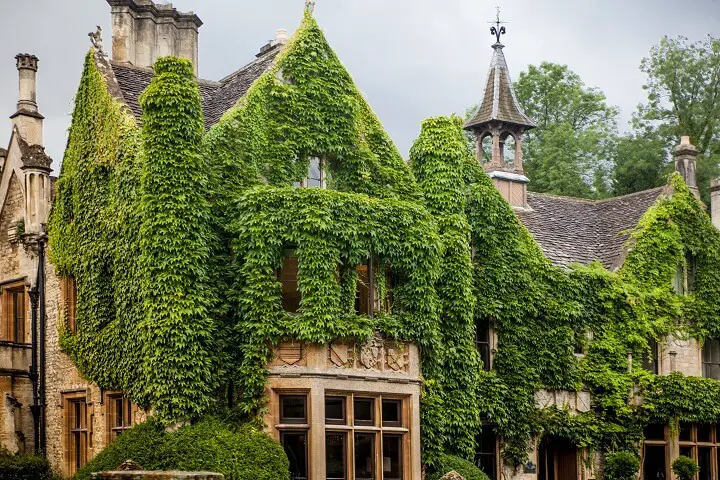Estimated reading time: 8 minutes
Most homesteaders love adding new plants and trees to their property. Not only do added plants help with pollination and provide an important food source, but many also help create barriers and boundaries along property lines.
There are plenty of plants that you can add to your yard or homestead without worrying about them becoming invasive or negatively affecting other plants. However, there are a few plants you should not grow in your yard if you want to keep the rest of the yard healthy.
Want to save this post for later? Click Here to Pin It On Pinterest!
Keep reading to learn more about plants that could become a problem.
1. Bamboo

Urban homesteaders seem to consider adding bamboo to their land more than those in rural areas. Bamboo is an exotic plant that can provide a quick and easy screen between your homestead and those pesky neighbors next door.
However, bamboo is one of the fastest-growing plants available, and it's bound to become a nightmare. Planting bamboo seems great, but it quickly can spread many feet from its original area and is quite hard to get rid of.
2. Blackberry

Homesteaders in the Pacific Northwest know a thing or two about blackberry bushes. Commonly seen on the side of highways and perimeters, blackberry bushes provide a lot of delicious food for homesteaders.
However, blackberry bushes are notorious for their ability to spread and tangle plants around them. If you want to add blackberry bushes to the homestead, consider planting them in a container or a raised bed where you can keep an eye on them.
3. Chinese Wisteria

Adding a terrace or pergola to the homestead is a great way to provide shade and beauty. It is easy to want to add a climbing vine to these areas to create coverage.
However, Chinese Wisteria is one of the worst options for any kind of climbing vine to add to the homestead. It is gorgeous and smells divine, but this invasive species will outgrow its intended area and spread to other parts of the yard.
4. English Ivy

When wanting to cover a large area like a wall or fence, it can be very tempting to choose ivy at your local garden center. While English Ivy is beautiful, it is well known as a plant that you should not grow in your yard.
This climbing vine can scale the toughest of walls and doesn’t need much to thrive. While it does a great job of covering up unsightly parts of the homestead, it isn’t worth the risk.
5. Garlic Mustard

Homesteaders in the Northern United States may identify garlic mustard as a hard species to get rid of. This invasive plant is edible and gets its name from the garlic scent that is produced when the leaves are crushed.
Garlic mustard is a plant you definitely shouldn't grow because it pops out of the ground much earlier than other plants in the early spring, giving it a head start on resources and space. The plant roots also seep chemicals into the ground, making it harder for native species to thrive.
6. Japanese Honeysuckle

Known for its white trumpet flowers, Japanese Honeysuckle is a quick-growing vine that shouldn’t be planted on a homestead. The many vine tendrils can grab ahold of almost anything in the garden, including the stems of young plants and trees.
Japanese Honeysuckle grows in dense formations that can cover other smaller plants as well. Its semi-evergreen composition allows it plenty of time in any climate to grow and take over.
7. Kudzu

Known as a fast-growing weed, kudzu can quickly become a problem for many Southeastern homesteaders. This quick-growing plant takes no prisoners and is known as the “Vine That Ate The South” as it creeps and spreads over anything in its path.
This perennial vine that originated in Asia can cause significant problems for homesteaders. Plant it near any garden or orchard, and you’ll have plants competing for resources.
8. Mint

This fragrant herb can add a wonderful aroma to any garden. However, mint is known for its ability to spread where you don’t want it. It is also hard to kill and can easily pop up in the oddest of places.
Consider growing mint on the homestead in a container to keep it in check. Doing so will allow you to harvest and enjoy this herb without jeopardizing the rest of your land.
9. Norway Maple

Once loved as a street tree, the Norway Maple has proven its ability to become more of a nuisance than it is worth on a homestead. This beautiful tree is excellent at self-seeding and can become its own grove in no time.
In addition, the root system of the Norway Maple is very shallow and wide, which can significantly impact any kind of lawn or other landscaping underneath.
10. Purple Loosestrife

As a plant that looks quite similar to lavender, purple loosestrife can seem very innocent with its beautiful pink and purple blooms.
However, this plant that was brought to America in the 1800s is now considered an invasive species. Purple loosestrife loves to grow in wet soil, and a single plant can produce up to 2 million seeds each year.
Final Thoughts
When deciding what kind of plant to add to the homestead, make sure to do your research. Adding one small plant can quickly become a problem. Not only will these invasive species spread to all areas of the yard, but they also snuff out the other plants that you want to have around.
Keeping your homestead plants in balance is a key factor in becoming self-sufficient. Fighting an invasive plant takes away precious time on the homestead.
If you absolutely must have one of these plants you shouldn't grow in your yard, consider putting it in a container where you can keep daily tabs on it. Doing so can keep the rest of the homestead strong and healthy to help you reach your homestead goals.
Like this post? Don't Forget to Pin It On Pinterest!












All parts of kudzu are edible
You CAN’T eat enough to Stop it from taking over..
Japanese honeysuckle makes the list of the top 50 herbs used in herbal Chinese medicine. The flowers are edible. I grew it for seven years at my previous house. It was planted in the ground and never spread.
Blackberry is also useful medicinally and the berries are tasty. It also didn’t spread much.
THen there are the members of the mint family–spearmint, peppermint, lemon balm, etc.
Whether any species is invasive probably depends on your climate. To say that someone should never plant them is silly. Many “invasive” species are actually quite beneficial. Do some research.
Kudzu tastes like beans, good to eat.